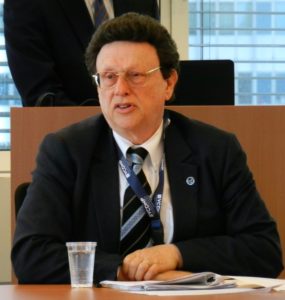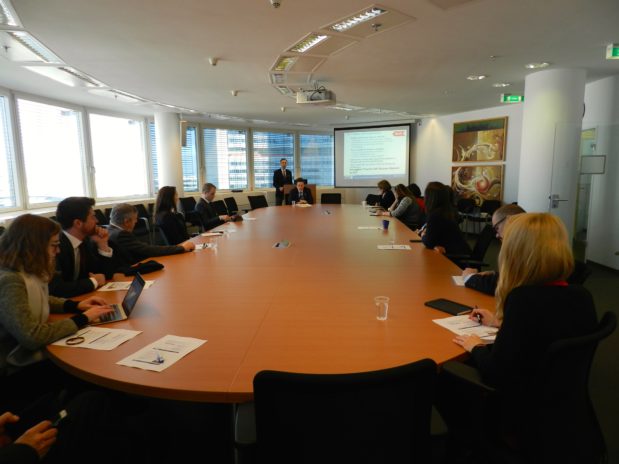

On 9 December 2016, the VCDNP hosted a briefing on a highly successful and innovative pilot project carried out by the James Martin Center for Nonproliferation Studies (CNS) on using new media tools to locate orphaned radiological sources in the Republic of Moldova. The briefing was delivered by William Potter, CNS Director, Bryan Lee, Director, Eurasia Nonproliferation Program and Margarita Kalinina-Pohl, Senior Program Manager, CNS Education Program. The briefing followed an interactive presentation on the project on 7 December 2016 at the IAEA International Conference on Nuclear Security.
The original research question CNS sought to address was: how can we locate orphaned radiological sources globally using new media tools? “Orphaned” radioactive sources, which pose a significant environmental and health risk, are those sources that are either: uncontrolled; controlled by an unknown owner; or possessed by an unlicensed individual. While the total number is unknown, these sources represent a significant problem, in particular in the former Soviet States. In 2016, CNS developed a project in partnership with the Moldovan National Agency for Regulation of Nuclear and Radiological Activities (NARNRA), and with the assistance of the Swedish Radiation Safety Authority, to assist the government authorities in the location and retrieval of orphaned sources in Moldova. The project was generously funded by the Skoll Global Threats Fund.
The resulting pilot project combined established IAEA methods for locating orphaned sources with enhanced capabilities using new tools, such as targeted social media searches and commercial satellite imagery mapping. NARNA provided CNS with a list of 101 facilities where orphaned sources might be located in the Republic of Moldova. Mining social media through professional networking websites and resume databases enabled CNS to find current and former employees of these facilities. The next step was the construction of a database to organize this information based on affiliation. Network analysis methodology was applied to determine centrality, the identification of individuals with the greatest connections within the network. Mapping this network visually provided a useful tool to help prioritize interviews of specific individuals. The 13 interviews that have been conducted so far have already led to the identification of a previously unidentified facility where orphaned sources might be located and a previously unknown cache of 24 plutonium‑239 smoke detectors. NARNA is planning to conduct a radiological screening of an additional facility, a sealed fallout shelter, where one of the interviewees indicated that a cesium-137 source might remain.
While this project was first and foremost borne out of health and safety concerns, the information that was collected has led to the recovery of orphaned radiological sources in the Republic of Moldova and has reduced the risk of such sources being used for malicious purposes. The hope of CNS is that the success of this project will be replicated in other countries as well. CNS is already engaged with the Swedish authorities to that effect.

Featured Photo by greyweed 